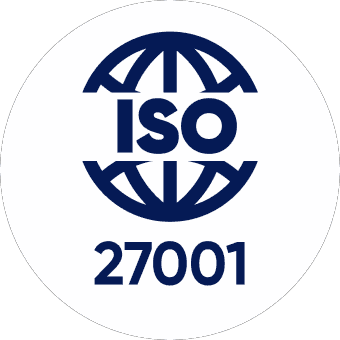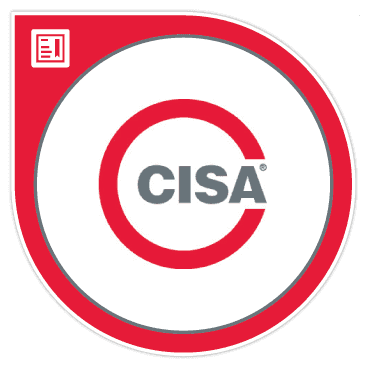For corporate banks, CASA (Current Account Savings Account) serves as a vital indicator of liquidity, operational efficiency, and overall financial stability. Increasing CASA is a priority, but many banks face significant challenges when it comes to scaling this metric effectively. One of the most effective strategies for driving CASA growth is through the streamlined onboarding of corporate employees. However, traditional onboarding processes are often time-consuming and error-prone, impeding the ability of banks to attract and retain corporate clients.
Integrating your corporate clients’ HRMS into your business systems is a transformative solution that automates the onboarding process, enhancing overall efficiency and contributing to CASA growth.
In this article, we’ll explore how HRMS integration, particularly through tools like HRMS Sync, can revolutionize onboarding and help corporate banks increase CASA by up to 40%.
Challenges in Current Corporate Banking Onboarding Processes
The onboarding process in corporate banking is traditionally riddled with inefficiencies stemming from manual workflows, fragmented systems, and redundant data entries. These inefficiencies translate into the following pain points:
Time-Consuming Procedures: Manual data entry and document verification extend onboarding timelines, delaying the activation of accounts and diminishing the client experience.
Data Inaccuracies: Human error in data handling can result in discrepancies that disrupt the onboarding process and jeopardize the bank’s credibility.
Operational Costs: The need for extensive administrative work elevates operational expenses, diverting resources that could be better used in value-generating activities.
Regulatory Compliance Challenges: Ensuring data privacy and meeting compliance standards can become arduous without an automated, consent-based data-sharing process.
These challenges not only hinder the onboarding process but also deter potential corporate clients from choosing a particular bank, thereby impacting CASA growth.
The Role of HRMS Integration in Onboarding Automation
HRMS (Human Resource Management System) integration provides a seamless way for corporate banks to access real-time employee data from client organizations. This automated connection eliminates the need for manual data submissions, streamlining the onboarding process significantly.
Here’s how HRMS integration enhances customer onboarding:
Real-Time Data Access: Banks receive instant updates on incremental employee data, reducing delays and improving decision-making.
Error Reduction: Automation minimizes the risk of human error, ensuring the accuracy of data used in onboarding.
Enhanced Compliance: HRMS integration facilitates consent-based data sharing, aligning with data protection regulations.
Improved Client Experience: Faster and more efficient onboarding leads to a better client experience.
These benefits collectively lead to faster onboarding cycles, enabling corporate banks to onboard more employees in less time and increasing CASA.
How HRMS Sync Boosts Onboarding Efficiency and CASA Growth
HRMS Sync is a unified API solution designed to connect corporate banks to their corporate clients, with the capability to integrate over 70 different HRMS platforms. This integration is pivotal for banks that want to optimize onboarding processes.
Here’s how HRMS Sync can transform onboarding for corporate banks:
Seamless Data Mapping: HRMS Sync offers easy mapping of critical data points across multiple HRMS, facilitating an automated exchange of information. This feature ensures corporate banks can quickly access the specific employee data required for onboarding without manual data collection.
Customizable Data Fetching: The platform allows corporate banks to customize the data model to align with specific onboarding requirements. This ensures that only relevant data is shared, maintaining data privacy and security.
Real-Time Updates: HRMS Sync provides real-time data updates, ensuring banks have the most current information about corporate employees. This is essential for maintaining the integrity of the onboarding process and reducing turnaround times.
Rule-Based Automation: HRMS Sync’s rule engine allows banks to set automated data processing rules, facilitating compliance with data privacy regulations.
Secure Data Transfer: HRMS Sync employs robust data encryption to protect data during transfers, aligning with stringent security standards and ensuring that employee data is handled securely.
These features make HRMS Sync an invaluable tool for corporate banks looking to improve onboarding efficiency. By automating the process, banks can onboard employees more rapidly, directly contributing to an increase in CASA.
With HRMS Sync, the Impact is even more pronounced
A leading corporate bank was struggling with onboarding delays due to a reliance on manual data submissions from corporate HR teams. The process was time-consuming and led to frequent data discrepancies, frustrating the bank and its clients. After adopting HRMS Sync to onboard corporate employees, the bank was able to see account activation times reduced by 50%. This efficiency directly influences CASA growth, as more accounts can be opened in a shorter timeframe. Furthermore, this allowed the bank to automatically receive incremental employee information, such as new hires and job position changes. The combination of speed, accuracy, and security-enhanced the client experience, encouraging corporate clients to direct their employees to open accounts with the bank.
Outcome: The onboarding process became 50% faster, and the accuracy of employee data improved dramatically. As a result, the bank saw a 40% increase in CASA within a year, driven by the accelerated onboarding of corporate employees.
Conclusion: For corporate banks aiming to increase CASA, the path forward is modernizing onboarding processes. HRMS integration, mainly through robust solutions like HRMS Sync, effectively automates data exchange, enhances accuracy, and streamlines compliance. By reducing the time and operational costs associated with onboarding, corporate banks can onboard more employees efficiently, resulting in substantial CASA growth.
The benefits are clear: expedited account opening, improved client satisfaction, and better compliance. Corporate banks seeking to gain a competitive edge and grow their CASA must consider investing in HRMS integration solutions. With tools like HRMS Sync, the journey toward seamless onboarding and higher profitability becomes a reality.
The Road Ahead: Integrating HRMS Sync for Success
To capitalize on the potential of HRMS integration, corporate banks should take the following strategic steps:
Evaluate Current Onboarding Processes: Identify pain points in onboarding workflows and areas where manual data handling causes delays and errors.
Train Staff on New Technologies: Ensure employees are trained to use new HRMS integration tools efficiently. Familiarity with the system boosts adoption rates and maximizes the benefits of automation.
Monitor and Optimize: Continuously monitor the performance of HRMS integration and make necessary adjustments. Collect feedback from corporate clients and internal teams to refine processes and enhance user experience.
The Competitive Advantage
Adopting HRMS integration streamlines onboarding and positions corporate banks as forward-thinking, client-centric institutions. In a market where efficiency, security, and customer experience are paramount, offering an automated and seamless onboarding process can differentiate a bank from its competitors.
Moreover, the enhanced onboarding experience encourages corporate clients to choose and recommend a bank that values their time and ensures a smooth process for their employees. This reputation can attract more corporate partnerships, creating a positive cycle of CASA growth and client satisfaction.
Closing Thoughts
Integrating corporate clients’ HRMS with bank systems through HRMS Sync is more than just a technological upgrade, it is a strategic move that aligns with the future of corporate banking. By embracing onboarding automation, corporate banks can significantly increase their CASA, optimize resource allocation, and enhance operational efficiency. The investment in HRMS integration pays dividends in the form of faster onboarding times, higher client retention, and, ultimately, increased profitability.
Corporate banks that take proactive steps toward onboarding automation will find themselves well-positioned to capitalize on growth opportunities, maintain compliance, and build lasting relationships with corporate clients. Click here to learn more about HRMS Sync.
Tartan helps teams integrate, enrich, and validate critical customer data across workflows, not as a one-off step but as an infrastructure layer.











